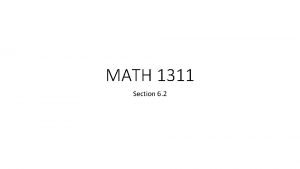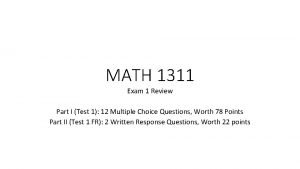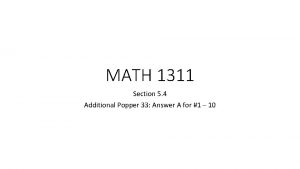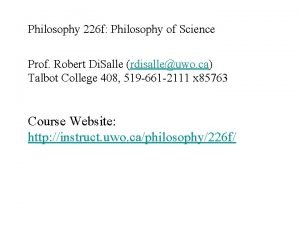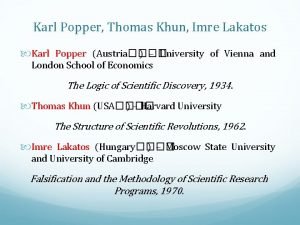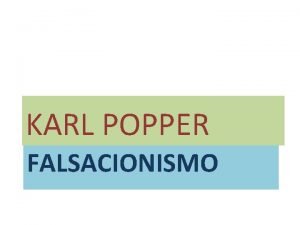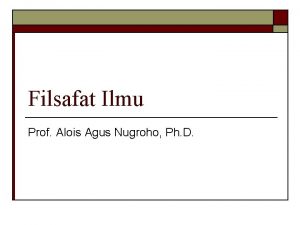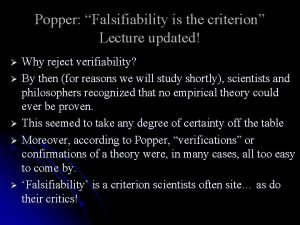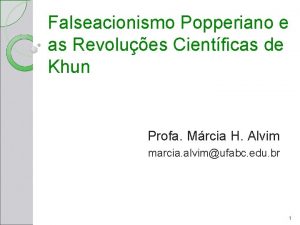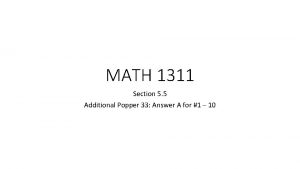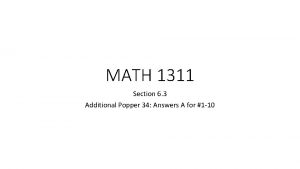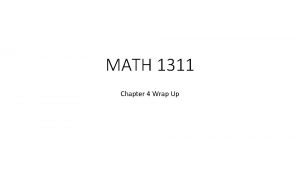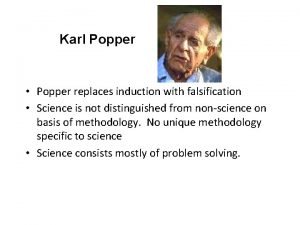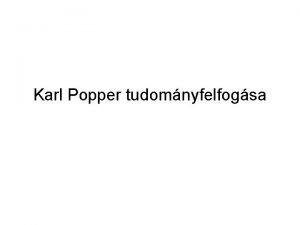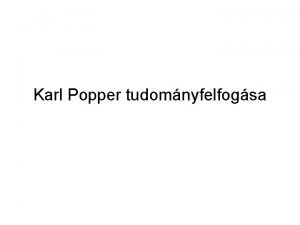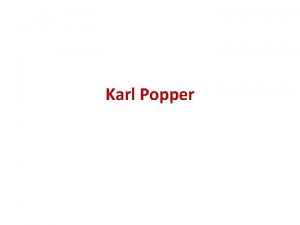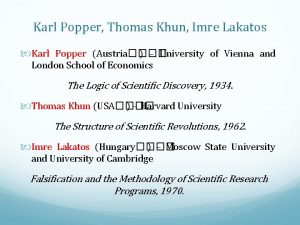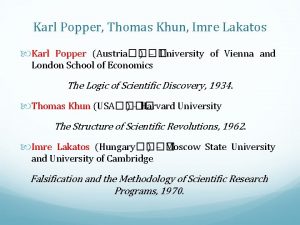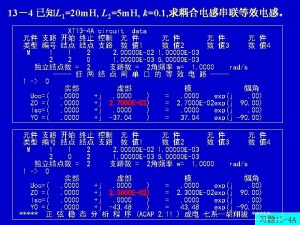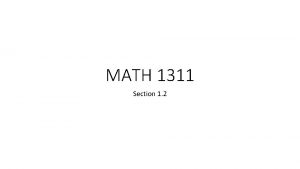MATH 1311 Section 5 4 Additional Popper 33

















- Slides: 17

MATH 1311 Section 5. 4 Additional Popper 33: Answer A for #1 – 10

Combining Functions There are times when different functions can be combined based on their individual properties. Very often, this will involve a limiting value (given as a linear component to a function) and an exponential or power function to represent the difference to that limit.

Example: You place a cup of coffee, at an initial temperature of 110 degrees, in a room with a constant temperature of 75 degrees. After 2 minutes, the temperature is 95 degrees. What is the limiting value of this situation? What is the initial temperature? What is the initial difference between these?

Example: You place a cup of coffee, at an initial temperature of 110 degrees, in a room with a constant temperature of 75 degrees. After 2 minutes, the temperature is 95 degrees. What is the limiting value of this situation? 75 degrees (the temperature of the room) What is the initial temperature? 110 degrees (the starting temperature) What is the initial difference between these? 110 – 75 = 35

Example: You place a cup of coffee, at an initial temperature of 110 degrees, in a room with a constant temperature of 75 degrees. After 2 minutes, the temperature is 95 degrees. The temperature of the coffee will be represented by the: C = Limiting Value ± Temperature Difference Since the limiting value is less than the initial temperature, we will use add the temperature difference. C = 75 + Temp Diff

Example: You place a cup of coffee, at an initial temperature of 110 degrees, in a room with a constant temperature of 75 degrees. After 2 minutes, the temperature is 95 degrees. Temperature difference is usually modelled by an exponential function. D = a bt The initial difference in temperature is 35 degrees, so that will become the a-value. D = 35 bt

Example: You place a cup of coffee, at an initial temperature of 110 degrees, in a room with a constant temperature of 75 degrees. After 2 minutes, the temperature is 95 degrees. D = 35 bt After 2 minutes, the temperature difference to the limiting value is 20 degrees, so we can use: 20 = 35 b 2 and solve for the b-value.

Example: You place a cup of coffee, at an initial temperature of 110 degrees, in a room with a constant temperature of 75 degrees. After 2 minutes, the temperature is 95 degrees. D = 35 bt After 2 minutes, the temperature difference to the limiting value is 20 degrees, so we can use: 20 = 35 b 2 and solve for the b-value. So D = 35 (0. 756)t b = 0. 756

Example: You place a cup of coffee, at an initial temperature of 110 degrees, in a room with a constant temperature of 75 degrees. After 2 minutes, the temperature is 95 degrees. The final formula is: C = 75 + 35 (0. 756)t Use this formula to estimate how many minutes it will take for the coffee to be 80 degrees.

Composition of Functions: Composition of functions occurs when one function is applied to another. This is done by substituting one formula for the independent variable in another formula.

Example: The fuel consumption of a car is given by g = d/35 where g is measured in gallons of gasoline and d is measured in miles. A car, at a constant speed of 65 miles per hour, travels a distance given by the formula d = 65 t where t is measured in hours and d is measured in miles. Write a formula that will give the fuel consumption of a car, driving at a constant speed of 65 miles per hour, in terms of time travelled.

Another Example: The weight, in pounds, of children can be defined in terms of their height, in inches, by the formula: w(h) = 4. 4 h – 150. The height of children can be estimated by their age, in years, according to the function: h(t) = 1. 9 t + 40. Create a formula that will relate a child’s weight to that child’s age. The use that formula to find the approximate weight of a child at an age of 12 years.

Piecewise Functions: •

Example: Water usage is charged at a flat rate of $35 for the first 5000 gallons used in the month, and then $. 01 extra for every additional gallon used. If we are to write a formula for w(x), at what value would that formula switch from one function to the other? What would it look like before this switch? What would it look like after?

Example: Water usage is charged at a flat rate of $35 for the first 5000 gallons used in the month, and then $0. 01 extra for every additional gallon used. If we are to write a formula for w(x), at what value would that formula switch from one function to the other? 5000 gallons What would it look like before this switch? 35 What would it look like after? 35 + 0. 01(x – 5000) = 0. 01 x – 15

Example: Water usage is charged at a flat rate of $35 for the first 5000 gallons used in the month, and then $0. 01 extra for every additional gallon used. Use this to find the monthly bill for having used: (a) 2500 gallons, (b) 5000 gallons, (c) 6500 gallons.

Popper 30 The dosage of a certain medication varies according to patient’s weight. For a patient under 150 pounds, 25 mg of medication should be administered. For patients 150 pounds through 250 pounds, the dosage should increase by 1 mg for every 10 pounds of weight. For patients over 250 pounds, the dosage should be 35 mg. 1. What conditions are used to break apart the function? a. age b. weight c. dosage d. height 2. What function should be used for 150 ≤ w ≤ 250? a. . 1 x – 150 b. . 1 x + 10 c. 150 x + 10 d. . 1 x – 150 3. What would the dosage be for a patient weighing 100 pounds? a. 25 b. 20 c. 35 d. 45 4. What would the dosage be for a patient weighing 200 pounds? a. 25 b. 30 c. 35 d. 45
 Math 1311
Math 1311 Math 1311
Math 1311 1311 korunovace
1311 korunovace Math popper
Math popper Positivism sociology
Positivism sociology Los tres mundos de popper
Los tres mundos de popper Karl popper's theory of falsification
Karl popper's theory of falsification Karl popper theory
Karl popper theory Falsacionismo
Falsacionismo Popper vs kuhn
Popper vs kuhn Polygonzüge
Polygonzüge Principle of falsifiability
Principle of falsifiability Estado teologico del positivismo
Estado teologico del positivismo Karl popper falsifikasi
Karl popper falsifikasi I spy balloon popper
I spy balloon popper Hermeneutisk betyder
Hermeneutisk betyder Falsifiability criterion
Falsifiability criterion Revolues
Revolues
